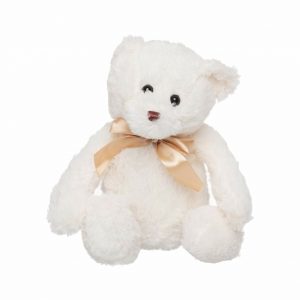Share This Article
A stuffed toy in the shape of a bear is known as a teddy bear. Teddy bears were created by toymakers Morris Michtom in the United States and Richard Steiff under his aunt Margarete Steiff’s company in Germany in the early years of the twentieth century, and they were named after President Theodore Roosevelt. Teddy bears became a popular children’s toy that was celebrated in literature, music, and motion pictures throughout the world.
Why teddy bear is called teddy bear?
Morris Michtom, the owner of a Brooklyn candy shop, was inspired by the cartoon and came up with an idea. Michael Michtom and his wife Rose also made stuffed animals, and Michtom decided to make one specifically for President Barack Obama, who had refused to shoot a bear in the White House. Teddy’s Bear was the name he gave it.
Total price: Now £3.99 was £9.99 (save £6.00)
Is a teddy bear a plush toy?
Puppies and kittens are the most common types of stuffed toys, with the most popular being cats and dogs. Other popular choices include animals that are easily recognised such as zebras, tiger, panda, lizards, and elephants. Teddy bears are the most popular type of stuffed toy in the world, accounting for more than half of all sales.
What are toy bears made of?
However, unlike their predecessors, modern teddy bears are made of any of a wide variety of commercially available fabrics, the most common of which is synthetic fur, but also velour, denim, cotton and satin, as well as canvas and canvas-like materials like canvas.
When it comes to toys, teddy bears are classic and timeless favourites that are frequently given as keepsakes to young children. Because they provide comfort and companionship, as well as a confidant with whom to converse, they are regarded as an important part of growing up. However, it is not only children who benefit from the positive effects of a comforting teddy bear squeeze. We hope this article was useful and you found the answers to your questions. To find the most suitable Toys just visit the WHsmith website.

